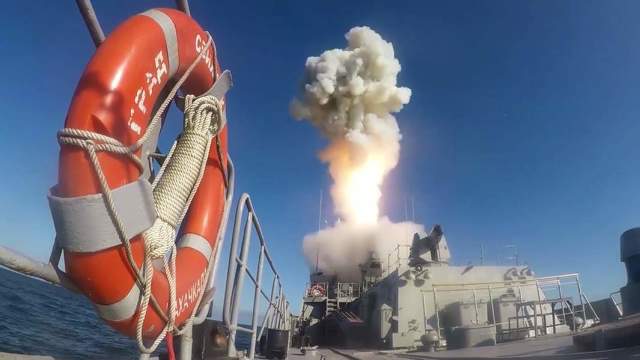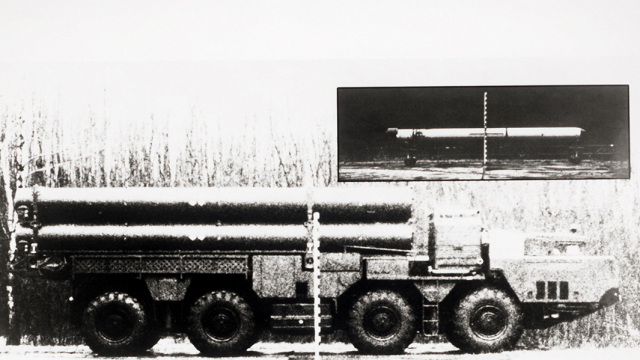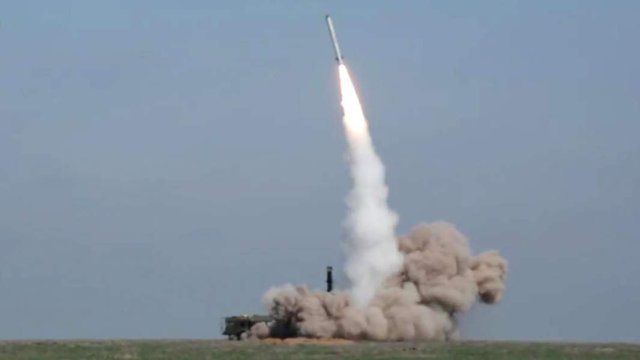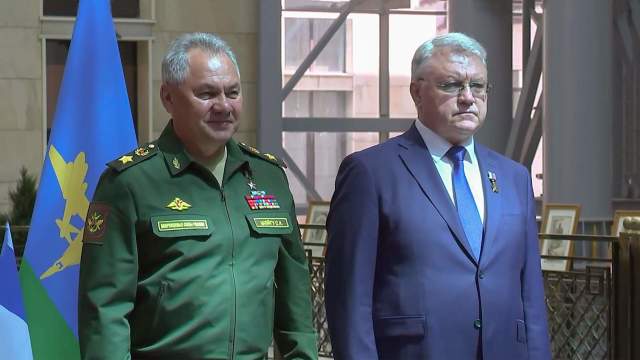Izvestia — about the most effective developments of the concern's enterprises over the past half century
On July 21, the "Golden Star" of the Hero of Russia was awarded to the CEO of the Almaz-Antey air Defense concern, Yan Novikov. The award is recognition of the fact that the weapons systems created by the enterprise proved themselves perfectly during a special military operation in Ukraine. This is the second case when the head of a military-industrial enterprise receives one of the highest awards of the state. Boris Obnosov, General Director of the Tactical Missile Armament Corporation, became the first last year. How the developments of Almaz-Antey have strengthened the country's defense capability for decades and influenced the effectiveness of the Russian Armed Forces — in the material of Izvestia.
Comprehensive solutions
The "Golden Star" was presented to Jan Novikov on July 21 by Russian Defense Minister Sergei Shoigu. According to the official wording — "for an outstanding contribution to ensuring the defense capability of the Russian Federation, the development and creation of modern weapons, military and special equipment." It is obvious that the award was a recognition of the combat successes achieved thanks to the products of Almaz-Antey during the SVO in Ukraine.
Of the weapons systems created by the concern, first of all, the S-300, S-300V, S-400 and S-500 zonal air defense anti-aircraft missile systems (SAMs) are heard. This list can be supplemented with anti-aircraft complexes of the Buk family of military air defense and various means of radar detection of air targets, as well as air defense control systems of various levels.
The concern includes the Novator experimental design bureau, which has created not only air defense systems, but also Kalibr cruise missiles for the Navy, 9M728 and 9M729 cruise missiles for Iskander-M ground-based missile systems.

Launch of a high-precision Kalibr cruise missile from a surface ship
Image source: Photo: RIA Novosti/Ministry of Defense of the Russian Federation
The history of the creation of modern cruise missiles goes back to the late 1960s. Then the USSR and the USA became interested in the idea of creating subsonic long-range cruise missiles. Soviet scientists in the course of the Echo research project established that with the help of a massive strike with such weapons, it is possible to overcome the air defense and missile defense systems of a potential enemy. At the same time, in the late 1960s, the idea of counter-detonation of nuclear warheads of cruise missiles appeared.
The first project of the domestic subsonic cruise missile was developed by the Novator Design Bureau on an initiative basis. But it turned out to be unclaimed until the United States began full-scale work on the creation of sea- and land-based cruise missiles SLCM and GLCM.
On June 19, 1975, the Military-Industrial Committee under the Council of Ministers of the USSR instructed Novator and its chief designer Lev Lyulyev to give a Soviet response to American developments. On this day, the history of the creation of a large family of missiles began, which includes both Kalibr and Iskander-M cruise missiles.
The marine torpedo-missile complex "Granat" with the KS-122 "Innovator" missile was created for arming the project 971 attack submarines that were promising at that time. Cruise missiles were supposed to be launched from torpedo tubes, and their main targets were to be administrative-political and large military-industrial centers with previously known coordinates.
For the first time in the USSR, an autonomous inertial control system was used on the KS-122 "Garnet" missiles with correction of the missile flight route along the terrain. This system included a computer, a radio altimeter, a flight task storage system and digital matrix maps of correction sites.

Launcher 9V2413 complex RK-55 and KR KS-122
Image Source: Photo: Commons.wikimedia.org
On the way to the "Caliber"
Work on sea cruise missiles went quickly, and already in 1976 tests of the first prototypes of the KS-122 began in the Crimea. Almost simultaneously, in December 1976, Novator was commissioned to develop the RK-55 Relief ground-based missile system. This happened in response to the creation of a ground-based missile system with GLCM/BGM-109G Tomahawk missiles overseas.
Tests of the new missile system began in 1983. In 1986, it was adopted by the Soviet Army. Serial production was established at the Machine-building Plant named afterKalinina in Sverdlovsk. By the time of the conclusion of the treaty on the reduction of medium- and short-range missiles between the USSR and the USA, only six launchers and 80 missiles for them were released. According to this agreement, all the missiles of the Relief complex were destroyed in 1988.
The naval "Grenades" served at least until the end of the 1980s, when, by agreement between the USSR and the USA, all non-strategic missiles with nuclear warheads were removed from the ships and submarines of the fleets of both powers. The carriers of the "Pomegranates" by this time were attack missile and torpedo submarines of projects 671RTM, 971, 945, 945A, as well as several special carrier boats of project 667AT "Pear" - they carried ammunition in 32 cruise missiles to eight torpedo launchers. It was assumed that the "Grenades" would also be part of the armament of the promising Ash attack boat — work on this project began in the 1980s.
The KS-122 of the Garnet complex was a classic subsonic cruise missile with wings opening after launch and a small-sized turbojet engine. Unlike the X-55 air-launched cruise missiles used by the Raduga ICBM, the KS-122 did not have a main engine extended from the fuselage after launch. By the way, many of the structural elements of this weapon later migrated unchanged to the R-500 / 9M728 Iskander-M missiles and marine Calibres. Among other things, these are elevator and direction rudders, wing opening elements, propulsion system.

Combat launch of a rocket from the Iskander-M complex at one of the polygons
Image source: Photo: RIA Novosti/Press Service of the Ministry of Defense of the Russian Federation
The peculiarity of the "Grenade" and "Relief" missiles was that their use was supposed to be exclusively with nuclear warheads, and this significantly reduced their use options — such missiles were intended only for, relatively speaking, the "last" war with a similar "nuclear" rival. And the development of the fleet required the expansion of the nomenclature and non-nuclear combat systems. So at the end of the 1980s, work began on non-nuclear analogues of the "Grenade" and "Relief", which were later adopted by the fleet as the "Caliber".
There are two main types of missiles in the Kalibr family: the 3M-14 for strikes against ground targets at a range of up to 2500 km and the 3M-54 anti-ship. Their export analogues are also produced. "Calibres" were created and tested in the 1990s-2000s. And in parallel, work was underway to create their land—based counterpart - the R-500 / 9M728 rocket for the Iskander-M universal complex. Its first launch took place in Kapustin Yar on May 29, 2007. After completing the test program, the 9M728 missiles were adopted in 2013.
Today, Kalibr and R-500/9M728 missiles are the most massive and high—precision long-range non-nuclear weapons of the Russian Navy and missile units of the Russian Ground Forces. This is the main impact fist for hitting any point objects at a range of 500 to 2500 km. And in the depths of the OKB "Novator" and the Almaz-Antey concern, work is underway to improve the "Calibers" and to create new samples that should become even more perfect and universal.
Dmitry Kornev


